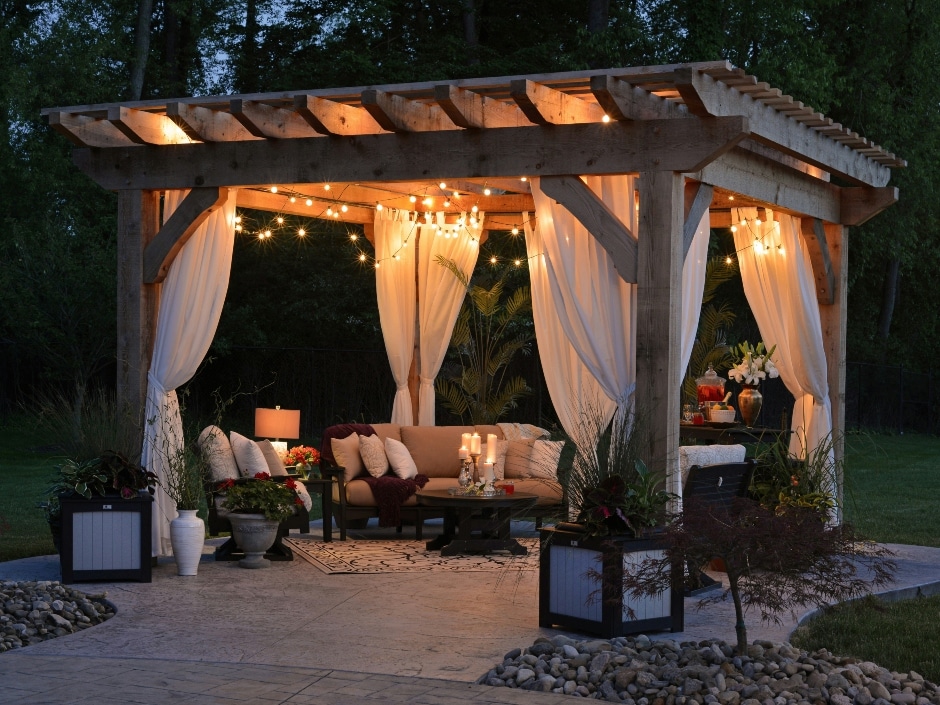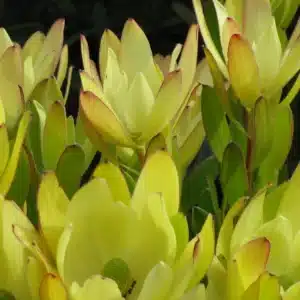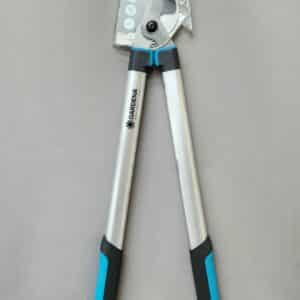Garden Lighting
DIY and how-to

Garden Lighting
A few simple lighting fixtures can highlight your garden’s main features – and extend the time you spend there.
Your garden may be bright and vibrant during the day, but is it dark and dull at night? A few carefully selected garden lights can transform your outdoor space when the sun sets. Many South Africans are adopting an indoor/outdoor lifestyle and well placed garden lighting increases the time spent outdoors.
Lighting in the garden is essential for safety and to illuminate areas where intruders may hide but it can have more than just practical importance. Lighting can create aesthetic appeal by drawing the eye to key design elements. Uplighters, where the light source is placed low and directed upwards, can transform a statue into a glowing focal point at night. Downlighting, where the light sourceis placed high and directed downwards, bathes an object in a pool of light. Fixtures can also be placed low to the ground to illuminates steps, creating an attractive look while providing a safe, well lit walkway.
Lighting up
Before you purchase your fittings, you will need to decide which areas of the garden to highlight. Take a powerful torch into the garden after dusk and experiment to find the right areas to illuminate, for example:
- Is there a statue you can draw attention to?
- Is there old, attractive tree, or a row of trees along a boundary wall?
- What about foliage? Palms, philodendrons, ferns, cycads, a rose garden or rock garden may benefit from concealed lighting.
- Do you have an attractive water feature or an elegant pot plant or urn?
- Consider driveways, steps, patios, a braai area and places that need to be lit for practical purposes.
Any of these areas or objects may give you clues as to where to install your garden lights. How you light them will depend on the fittings you choose.
Selecting fittings
Fittings manufactured for outdoor use are properly sealed and housings are constructed from material able to withstand an onslaught from the weather. Polycarbonate or PVC fittings, provided they are UV stabilised to prevent premature colour fading, are ideal for outdoor use. Garden spikes, which you push into the ground, or bulkheads, may be manufactured from this material. Other fittings are produced from die-cast aluminium and stainless steel. Although hard-wearing, stainless steel isn’t maintenance-free and needs attention or it will corrode. Care must be taken, especially in coastal gardens.
If you select fittings that need to be wired into your home’s electrical circuit you must have the job completed by an accredited contractor. The electrician will know which waterproof cabling to use, how deep cabling must be buried and he will make sure that the socket outlet controlling the lights is under earth leakage protection.
Make sure you know exactly where cables have been placed and alert all other people who work in your garden to their location. If you have electrical experience, you can lay the cables but get the connection completed and certified by a registered electrician before you use it. Low-voltage systems are popular because they emit a softer light and are energy-efficient. Lights can also be linked to a timer to switch them on and off.
Solar lights
Solar garden lights save electricity and are easy to install. Some products are complete power packs on their own consisting of a solar panel, several LEDs and a built-in battery for storing energy for use at night. Other products use an external solar panel that powers a small battery which feeds energy to the fittings. The brightness of the light is determined by the wattage of the LEDs and their quality. Some products emit very low light while others produce a distinctly brighter white or amber hue. Careful consideration must be given to where solar lights are placed. They need at least four hours of direct sunlight to run optimally at night but this will also depend on the individual product. Some products can give six hours of light while others are capable of up to 12 hours of strong light.
Fibre optics
Another energy-saving option for lighting features in the garden is a fibre optic system. Up to 15 individual areas can be illuminated with a single light-engine or projector. Light is taken from the projector via fibre optic cables to the fixtures which can be placed up to 10 metres away from the projector. Only one bulb in the projector needs to be replaced if it burns out. The system is safe to use around water features to achieve a mirrored effect on the surface of the water.
Creating an effect
Concealed lighting is a must for any garden, creating splashes of gentle light where it is needed. Fittings are hidden behind foliage, plants or rocks and the beam directed at the desired angle. Bring out the texture of the bark of an old tree or a stone wall by directing a beam of light along the surface of the wall. Concealed back lighting creates a silhouette, perfect for drawing attention to a focal point like a statue or a large flower pot.
Decorative fittings can be used when a concealed light source isn’t practical. Wall mounted uplighters on the patio or an attractive garden lamp placed in a flowerbed can provide light where you need it. Beware of glare from fittings you can see. This is especially important around the pool area and patio. Several lampposts from your entrance gate along the driveway create a path of light and are a softer alternative to the harsh glare of a spotlight.
Whether you choose electricity or solar power to light up your garden this summer, remember that the key to successful garden lighting is that it should never be overdone. A few well chosen and carefully placed fittings are all you need to experience magic when the sun sets.
You might also like
Shop online
-
PLASTIC SQUARE BLACK/GREEN POT 7CM X15CM
- R49.99
- Select options This product has multiple variants. The options may be chosen on the product page Learn More
-
PRUNING LOPPER
- R799.99
- Add to cart Learn More
-
- Sale!
MED ADULT 15KG
- Original price was: R1,599.99.R1,279.99Current price is: R1,279.99.
- Add to cart Learn More




